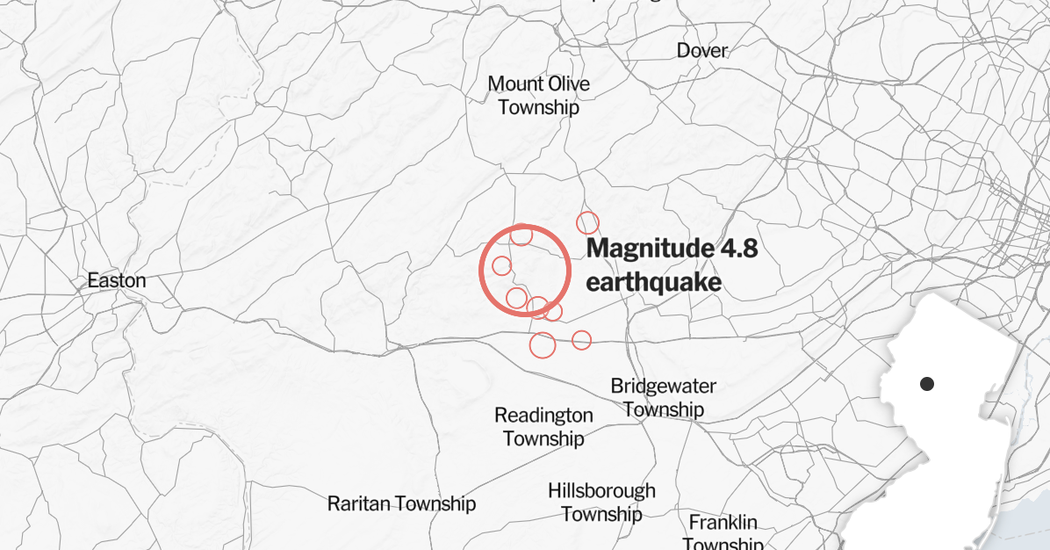Will the ground around Whitehouse Station, N.J., continue to shake in the coming days? Almost certainly.
Indeed, several aftershocks have already occurred. The latest, at 5:59 p.m. Eastern time according to the United States Geological Survey, occurred near Gladstone, N.J., and had a preliminary magnitude of 4.0 and was reportedly felt all around the region.
Earlier aftershocks were around magnitude 2.0, barely perceptible even to people standing right at the epicenter.
Larger aftershocks are also possible.
The U.S.G.S. forecasts a 45 percent chance of an aftershock of magnitude-3 or larger in the next week. The odds rise to 66 percent over the next year.
Is this a precursor to a devastating quake? Maybe, but unlikely.
Major earthquakes of magnitude-7 or higher are often preceded by modest foreshocks. But so far, seismologists have not identified any distinguishing characteristics of a given quake that would warn of an impending larger quake.
If a devastating quake occurs next week, seismologists will retroactively call Friday’s shaking a foreshock. But they have no way to confidently predict a large quake ahead of time.
Seismologists also know that large earthquakes in this part of the world are rare. A study by scientists at Lamont-Doherty Earth Observatory at Columbia University in 2008 found that a magnitude-5 earthquake occurs in the New York City region about once a century, a magnitude-6 or larger about once every 670 years and a magnitude-7 at once every 3,400 years.
That is reflected in the geological survey’s aftershock forecast, which currently says that there is less than a 1 percent chance that Friday’s quake will be followed by a magnitude-6 quake or larger. Even the chance of a comparable earthquake of magnitude 5 is only 3 percent over the next week and 8 percent over the next year.
The forecast will be updated as instruments measure new seismic data.
John Keefe contributed reporting.
